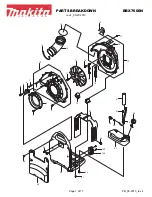
A
Optimizing the LC Conditions
Flow Splitting
124
Surveyor MSQ Plus Hardware Manual
Thermo Scientific
Flow Splitting
Because the Surveyor MSQ Plus MS detector can handle flow rates up to 2 mL/min, flow
splitting of the LC eluent is not usually required. However, if hyphenated detection (using
both a UV detector and an MS detector) is required, flow splitting can be achieved by using a
zero dead volume Tee fitting. Eliminating the flowcell of the UV detector from the solvent
path to the MS detector minimizes the peak broadening for the chromatograms produced by
the MS detector.
The split ratio between the flow going to the UV detector and the flow going to the MS
detector is determined by the relative backpressure in the two lines. If the backpressure
exerted by the connection to the API source probe is greater than the backpressure exerted by
the connection to the UV detector, the flow to the API source probe is lower than the flow to
the UV detector.
PEEK Tubing
PEEK (Poly-Ether-Ether-Ketone) tubing is a widely used alternative to stainless steel tubing
in the high-pressure parts of the system. It is compatible with most LC solvents except THF
(tetrahydrofuran), methylene chloride, and concentrated nitric acid. It works well to a
reasonably high pressure, is easy to cut and route, and is less expensive than stainless steel.
PEEK tubing comes in eight different internal diameters that are color-coded. The tubing
comes in solid colors or in natural with a color-coded stripe on its external surface. The inner
diameters and internal volume of five of the most commonly used colors are listed in
.
Table 11.
1/16-in. OD PEEK tubing color coding
Color
Inner Diameter
(in.)
(mm)
Internal Volume
(
μ
L/in.)
Green
0.030
0.75
11.577
Orange
0.020
0.50
5.146
Blue
0.010
0.25
1.288
Yellow
0.007
0.18
0.632
Red
0.005
0.13
0.323









































